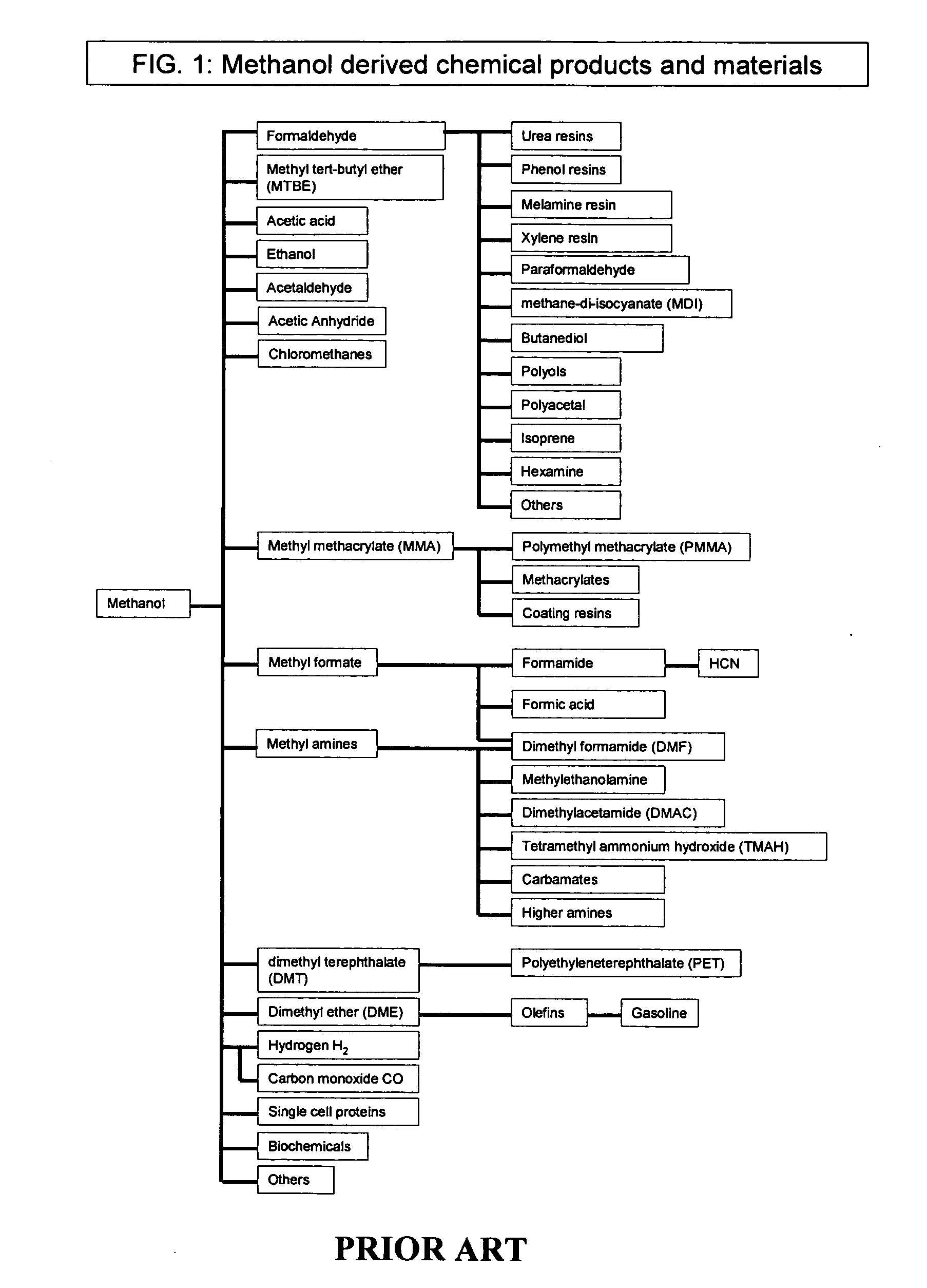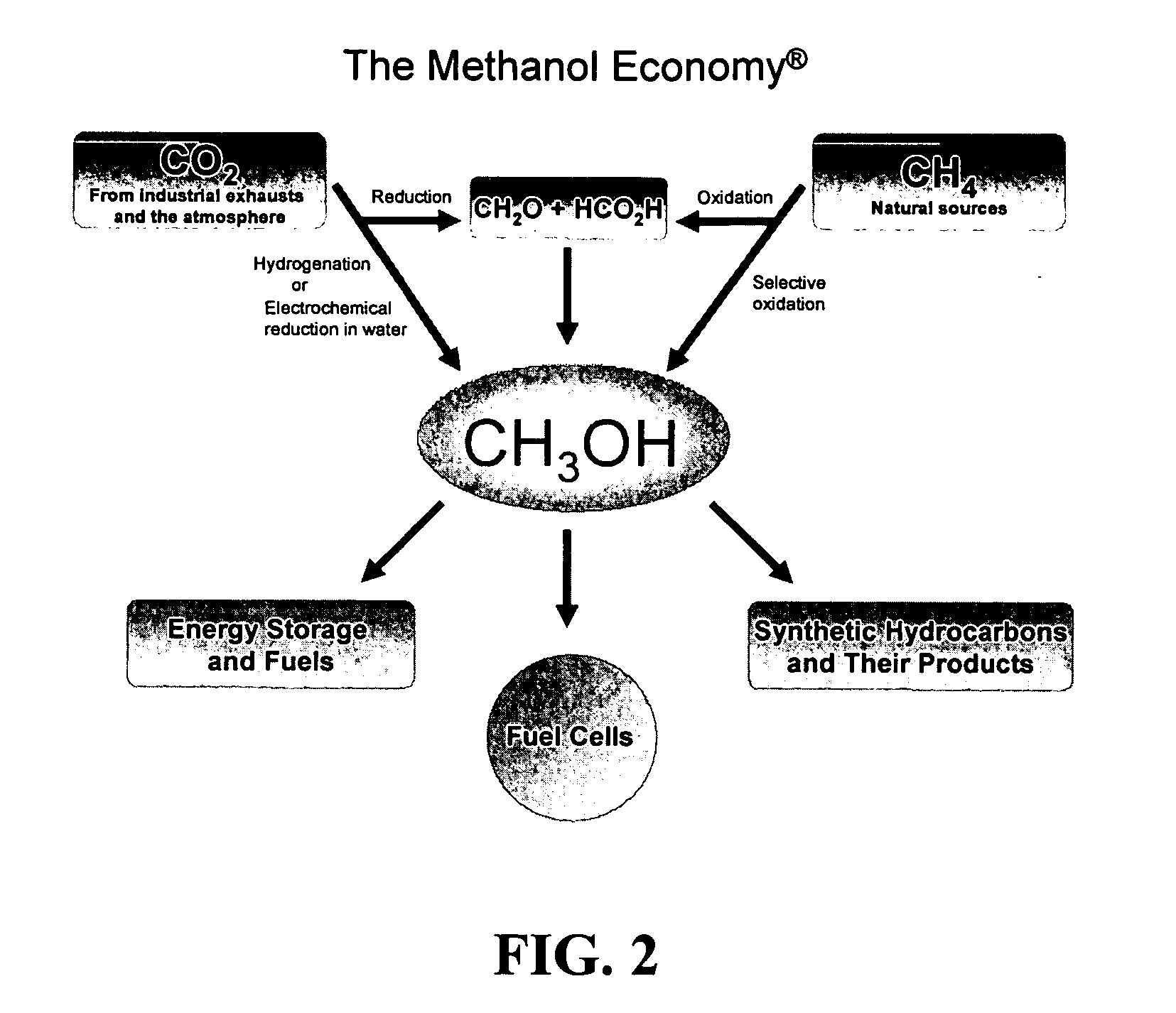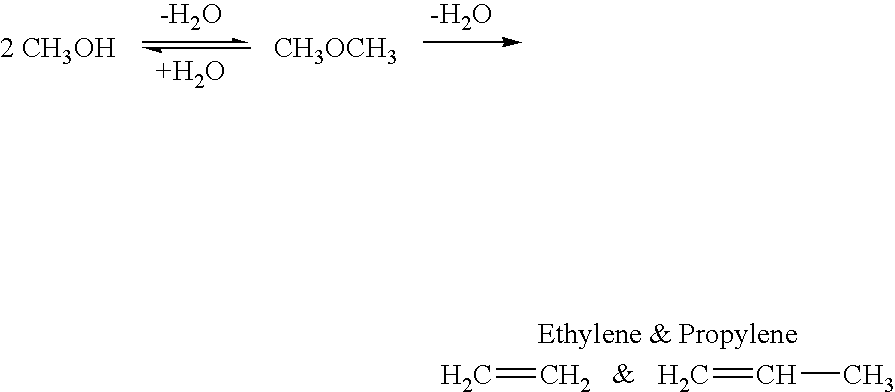Selective oxidative conversion of methane to methanol, dimethyl ether and derived products
a technology of dimethyl ether and oxidative conversion, which is applied in the direction of ether preparation by compound dehydration, hydrocarbon oil treatment products, and oxygen compounds preparation by reduction. it can solve the problems of reducing the efficiency of ether preparation, so as to reduce the disadvantages or dangers inherent in the process of oxidation. or elimination
- Summary
- Abstract
- Description
- Claims
- Application Information
AI Technical Summary
Benefits of technology
Problems solved by technology
Method used
Image
Examples
example 1
[0080] A gaseous mixture of methane (20 mol %), O2 (10 mol %), diluted with nitrogen, was passed over preheated SiO2 at 650° C. in a quartz tube continuous flow reactor to obtain 17% of formaldehyde in a single passover. The conversion of methane was 30%. Similar reactions over other oxide and mixed oxide catalysts are expected to provide yields of formaldehyde in the range of 10-20% with about 20 to 50% methane conversion. Unreacted methane is recycled. Smaller amounts of CO as well as CO2 that are produced can be used in the additional preparation of methanol. Air can be substituted for oxygen in the oxidation step.
[0081] In a subsequent second step, the product mixture formed in the first step without any separation of the reaction products under basic catalytic conditions (CaO, MgO and the like) either under the gas phase flow conditions (100-180° C.) or under batch conditions (at 150° C.) provides methanol and formic acid. The conversion and selectivity in the Cannizzaro react...
example 2
[0082] Over a ZrO2 catalyst, the gaseous formaldehyde obtained in Example 1 was reacted at 150° C. to obtain methyl formate in 99% selectivity with 85% conversion. The other aforementioned catalysts are expected to provide similar selectivity and conversions.
example 3
[0083] The methyl formate obtained by the processes of Examples 1 and 2 is catalytically reduced with molecular hydrogen in the gas phase over copper chromite catalysts at atmospheric pressure in the temperature range of 100-230° C. Selectivity to methanol is >90% and methyl formate conversion is about 85 to 90%.
PUM
| Property | Measurement | Unit |
|---|---|---|
| MON | aaaaa | aaaaa |
| RON | aaaaa | aaaaa |
| boiling point | aaaaa | aaaaa |
Abstract
Description
Claims
Application Information
 Login to View More
Login to View More - R&D
- Intellectual Property
- Life Sciences
- Materials
- Tech Scout
- Unparalleled Data Quality
- Higher Quality Content
- 60% Fewer Hallucinations
Browse by: Latest US Patents, China's latest patents, Technical Efficacy Thesaurus, Application Domain, Technology Topic, Popular Technical Reports.
© 2025 PatSnap. All rights reserved.Legal|Privacy policy|Modern Slavery Act Transparency Statement|Sitemap|About US| Contact US: help@patsnap.com



